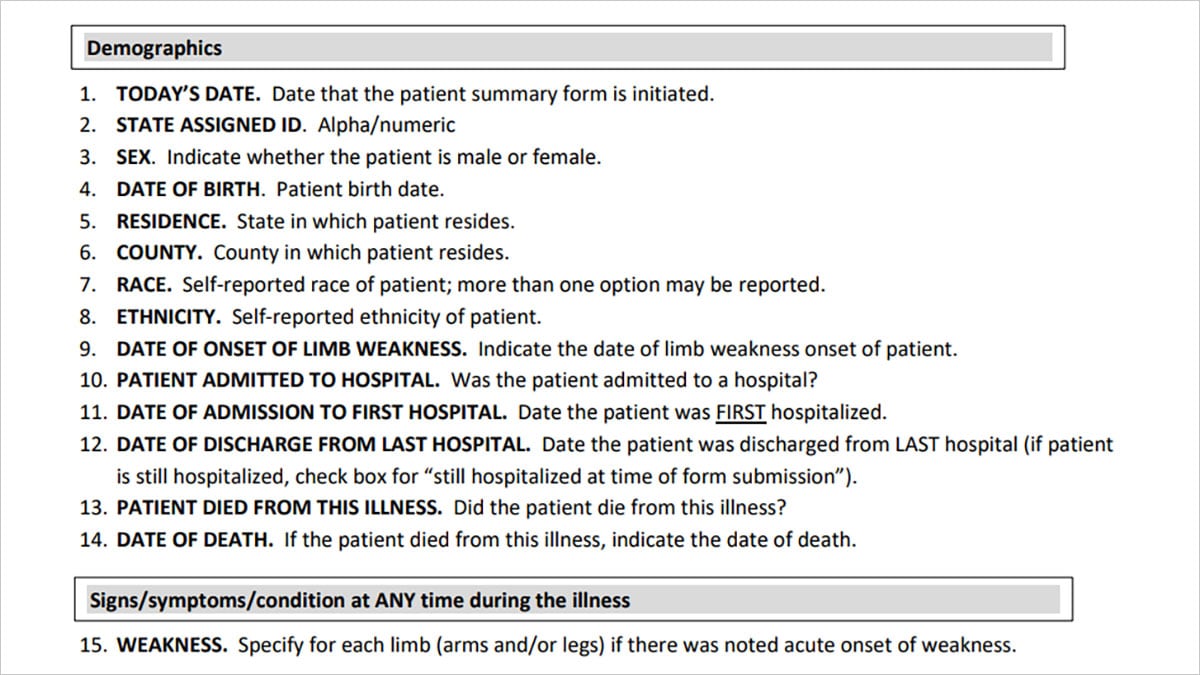Key points
- You must report polio to CDC within 4 hours (paralytic polio) to 24 hours (non-paralytic polio).
- You should also report potential cases of acute flaccid myelitis (AFM), a possible symptom of polio.
Reporting suspected cases of polio
If testing reveals presence of poliovirus, follow the guidance for polio reporting:
Urgent notification for polio cases
Paralytic polio has been classified as "Immediately notifiable, Extremely Urgent," which requires that local and state health departments contact CDC within 4 hours.
CDC (Emergency Operations Center, 770-488-7100) will provide consultation regarding:
- The collection of appropriate clinical specimens needed for poliovirus detection
- The initiation of appropriate consultations and procedures to rule out or confirm poliomyelitis
- The compilation of medical records
For more information about what should be collected as part of a case investigation see:
Polio Chapter | Vaccine Preventable Diseases Surveillance Manual
Reporting patients with symptoms
Patients who have sudden onset of limb weakness and an MRI with at least some gray matter involvement in the spinal cord could have acute flaccid myelitis (AFM). AFM can be a symptom of polio. Clinicians should report these cases to their state/local health department.
If you have received information about a patient under investigation (PUI) for AFM, you must do the following:
- Work with the clinician to complete the patient summary form.
- Collect the requested clinical information if available (such as MRI report, MRI images, neurology consult notes).
- Contact CDC ([email protected]) to coordinate the case classification process.
How to report an AFM PUI
Use the following documentation and instructions to report an AFM PUI:
Patient Summary Form Instructions
The clinician should use the following documentation to collect specimens (part of testing for AFM includes testing for poliovirus):
AFM Specimens Collection Instructions
Note: It is critical to try and obtain two stool samples collected at least 24 hours apart, both collected as early in illness as possible and ideally within 14 days of illness onset. Poliovirus is most likely to be detected in stool.


